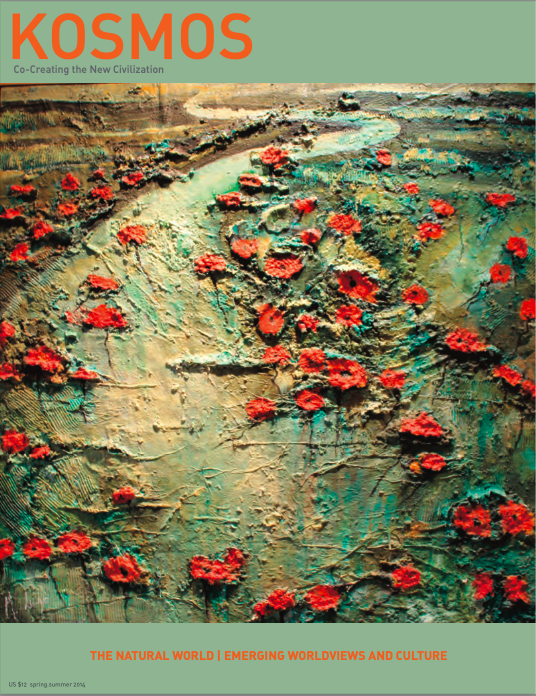By Riane Eisler for World Futures: The Journal of Global Education Publication. Published online: 12 Jul 2013.
A basic principle of systems theory is that if we do not look at the whole of a system, we cannot see the connections between its various components. This article describes the author’s personal and research journey developing a new method of inquiry and a new theory of cultural evolution that takes into account the whole of our history (including prehistory), the whole of our species (both its male and female halves), and the whole of social relations (from politics and economics to family and other intimate relations). It reveals connections and patterns not visible using smaller data bases and casts a new, more hopeful, light on our past, present, and the possibilities for our future.
Notes
1. Eisler, R. Human possibilities (work in progress).
2. These interactions have been described by Maturana and Varela as autopoiesis, by Prigogine and Stengers as auto- and cross-catalysis, and by Csanyi and Kampis’s concept of autogenesis.
3. There are in cultural systems feedback and feedforward loops, continual auto-catalytic and cross-catalytic processes that maintain the system’s basic character. I use the term “feedforward” in the sense of “top-down feedforward” proposed by Karl Pribram, rather than in the sense of the older “bottom-up feedforward,” such as the passage of a visual image from the retina to the cortex.
4. The categories democratic/authoritarian come closest to partnership and domination, but they are generally used only to describe political arrangements (the presence or absence of “free elections”), and are only occasionally used to also denote family structures. Moreover, they do not describe other key components of social systems, such as economics, religion, and education.
5. In their analysis of capitalism and socialism, Marx, and particularly Engels, noted what they called the first class oppression: that of women by men. But, except in some passages in Engel’s Origin of the Family and an occasional paragraph in Marx’s writings, they viewed this issue as a peripheral “woman question” rather than a key social issue.
6. Private communication from Peggy Reeves Sanday, January 30, 2002.
7. Eisler, R. Human possibilities.
8. Eisler, Loye, and Norgaard (1995). The nine measures used to assess the degree of gender equity were: the number of literate females for every 100 literate males; female life expectancy as a percentage of male life expectancy; the number of women for every 100 men in parliaments and other governing bodies; the number of females in secondary education for every 100 males; maternal mortality; contraceptive prevalence; access to abortion; and based on measures used by the Population Crisis Committee (now Population Action International), social equality for women and economic equality for women. The thirteen measures used to assess quality of life, were: overall life expectancy; human rights ratings; access to healthcare; access to clean water; literacy; infant mortality; number of refugees fleeing the country; the percentage of daily caloric requirements consumed; Gross Domestic Product (GDP) as a measure of wealth; the percentage of GDP distributed to the poorest 40 percent of households; the ratio of GDP going to the wealthiest versus the poorest 20 percent of the population; and as measures of environmental sensitivity, the percentage of forest habitat remaining, and compliance with the Convention on International Trade in Endangered Species. In exploring the relation between the gender equity and quality of life variables with descriptive, correlational, factor, and multiple regression analyses, the authors found a strong systemic correlation between these two measures. These findings were consistent with their hypothesis that increased equity for women is central to a higher quality of life for a country as a whole, and that gender inequity contracts the opportunities and capabilities, not only of women, but of the entire population. The link between gender equity and quality of life was confirmed at a very high level of statistical significance for correlational analysis. 61 correlations at the .001 level with 18 additional correlations at the .05 level were found, for a total of 79 significant correlations in the predicted direction. This link was further confirmed by factor analysis. High factor loadings for gender equity and quality of life variables accounted for 87.8 percent of the variance. Regression analysis, also yielded significant results. An R-square of .84, with statistical significance at the .0001 level, provided support for the hypothesis that gender equity is a strong indicator of the quality of life.

